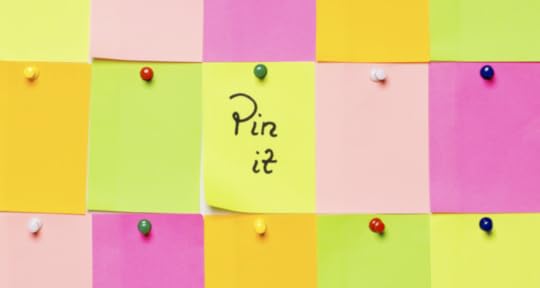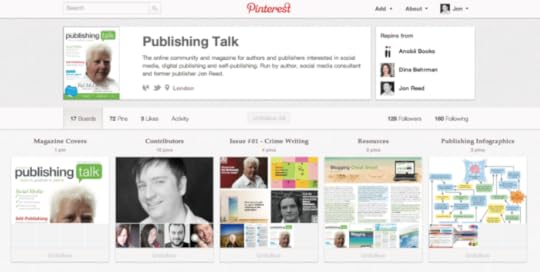How to Promote Your Books with Pinterest

Are you on Pinterest yet? The latest social media phenomenon has crept up on many of us – yet the statistics show that pinning is winning. Pinterest is already the third most popular social network after Facebook and Twitter, according to a 2012 report by Experian. It has an estimated 13 million users. It is the fastest site ever to break through the 10 million unique US visitors mark according to comScore. And it now drives more referral traffic than Google+, YouTube and LinkedIn combined, according to a Shareaholic study in January 2012. All of which is reason enough to take an interest in Pinterest. But what is it – and how can you use it as a publisher or an author?
What is Pinterest?
Pinterest is a virtual corkboard – a place to pin your interests. You create and arrange boards on specific topics and pin images and other media such as video to them. Pinterest starts you off with a few default boards, including ‘Books Worth Reading’ and ‘Places and Spaces’. You can delete or rename these to suit your interests. Add the ‘Pin It’ button to your browser’s toolbar and you can start pinning images to your boards from any web page with a couple of clicks. Add or edit descriptions of them. Other people can like and comment on your pins; and they can ‘repin’ (share) your pins on their own boards.
Not just for girls
Isn’t Pinterest just full of fashion, flowers and fairy cakes? The statistics do suggest a feminine bias. In 2012 it was reported that 83% of users in the U.S. were women. However, in the UK the picture is different: 56% of users are male, with an age profile 10 years younger than the U.S. typical age range of 35-44.
Even if you don’t think the current user base of Pinterest makes it a place for you, be aware that demographics may differ geographically, and both users and usage may change over time – especially where new networks are concerned. Get in there early, and don’t be put off by the décor.
Whose image is it anyway?
Copyright is the big controversy with Pinterest for many publishers. To me, an image pinned doesn’t seem much different to an image displayed in Google image search results. They both just link to the source – and you want to encourage links to your website, don’t you? The real danger with Pinterest is not having images on your website. When I joined Pinterest (pinterest.com/jonreed71) there were many web pages that I wanted to link to – but couldn’t, simply because there were no images on the page. No image, no link.
Why Pinterest works
In some ways Pinterest is just another social bookmarking site: people use it to share links to other websites. But because you are sharing an image from the web page you are linking to, rather than a text link to it, it has a much higher click-through rate than text-based social bookmarking sites. The links are also more permanent than those shared on Twitter, as they are more likely to be discovered, shared and clicked on long after links shared on Twitter have disappeared way down your timeline.
…
Read more, including five ways for authors and publishers to use Pinterest, in Publishing Talk Magazine #01

Follow Publishing Talk on Pinterest at pinterest.com/publishingtalk






